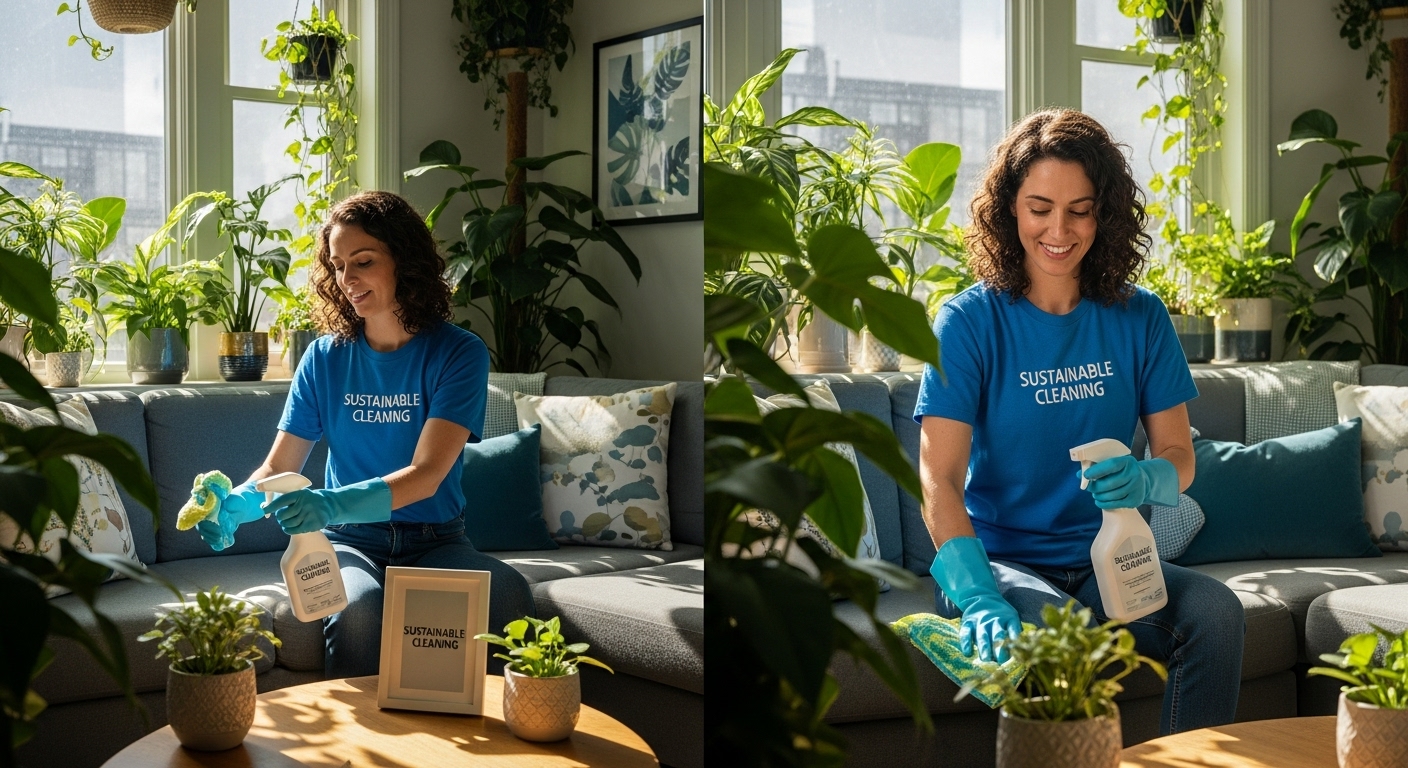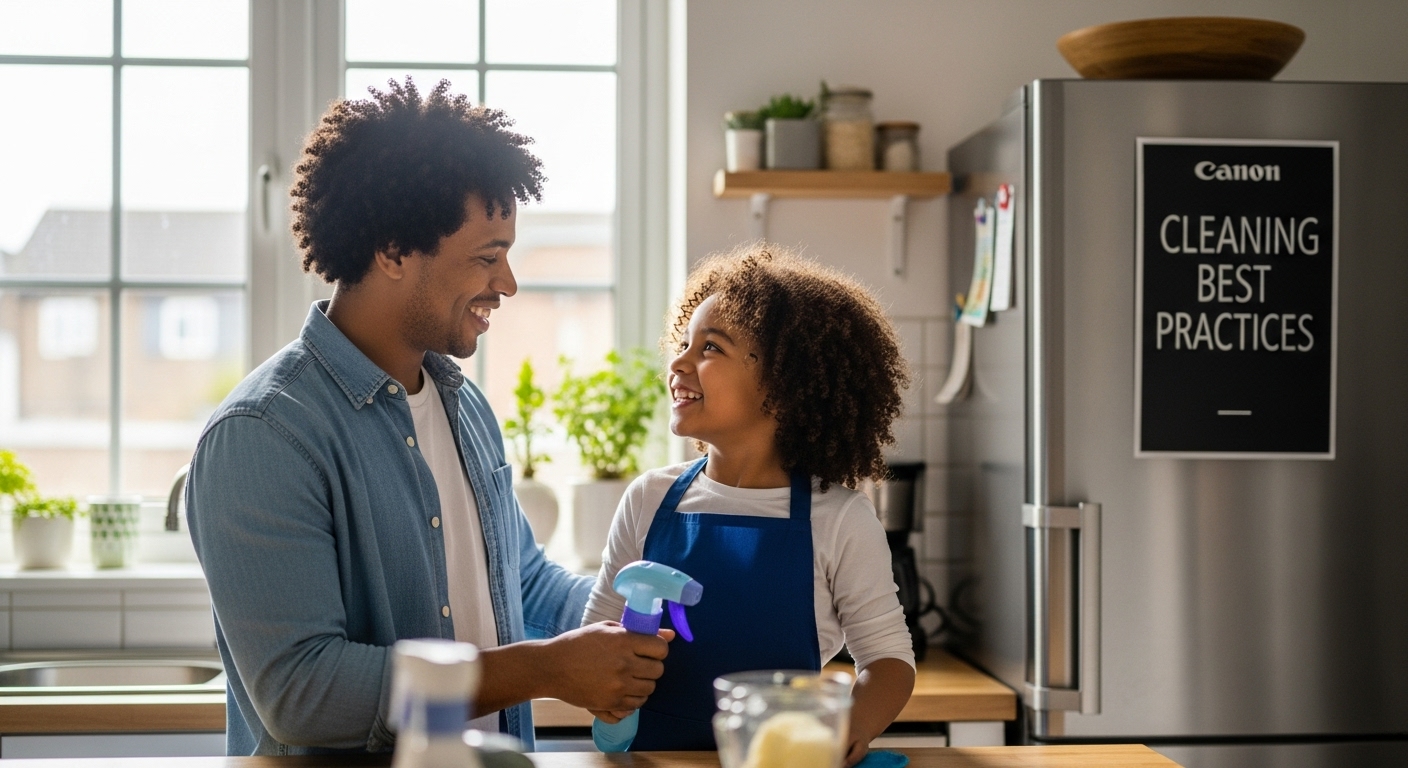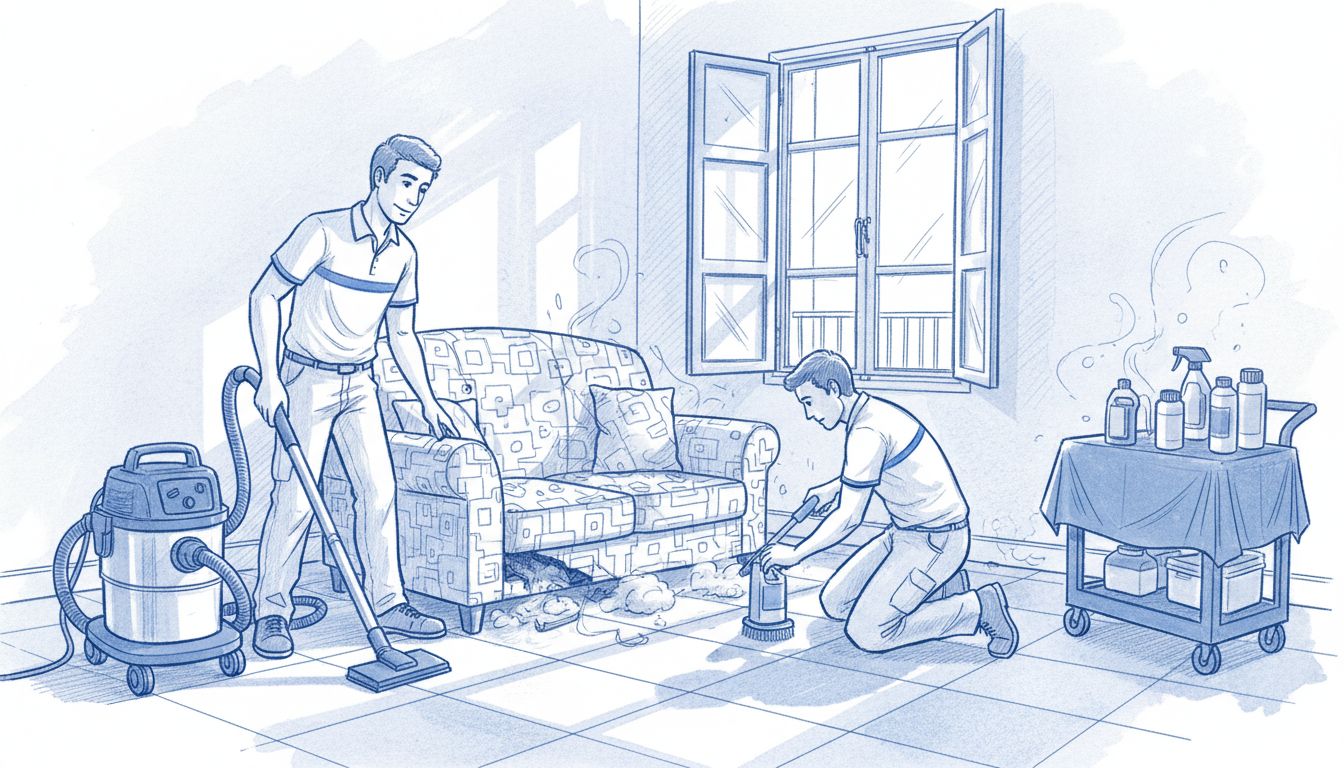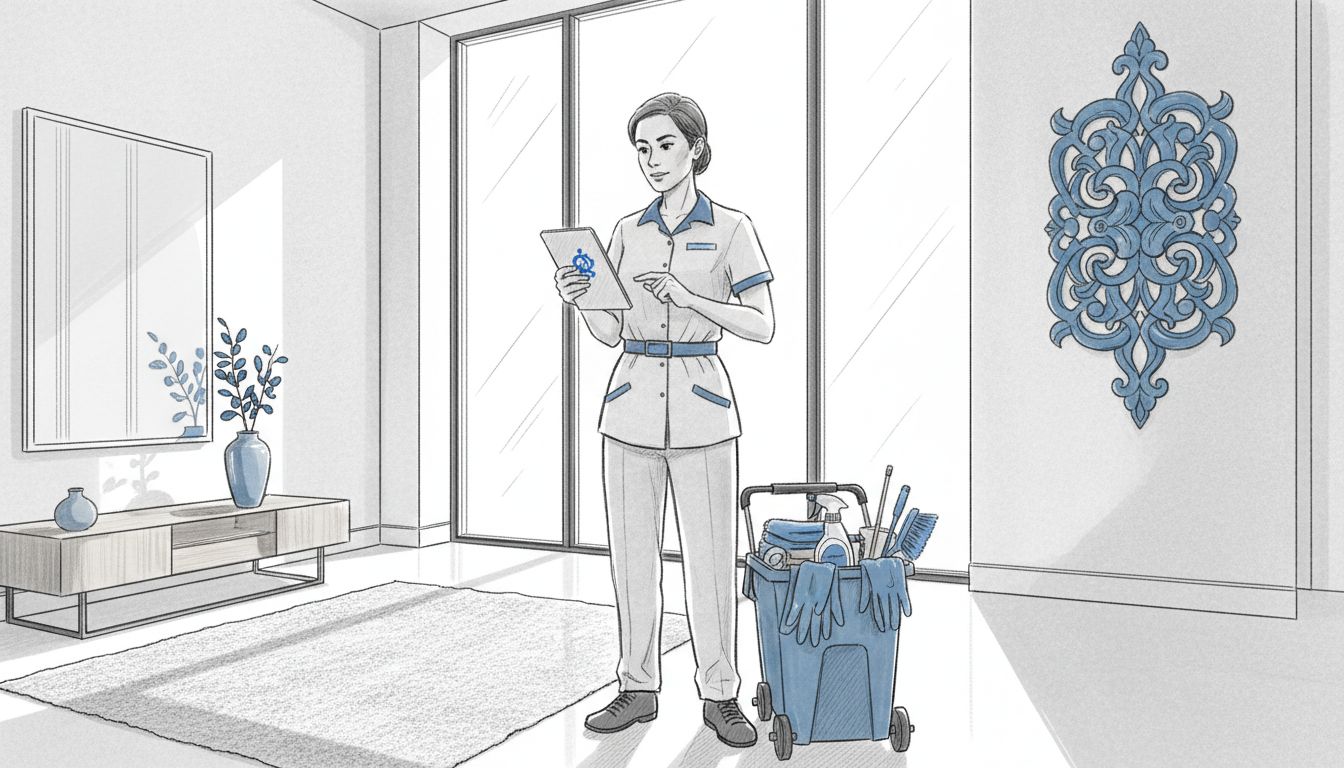Cleaning habits shape the health and safety of every home, yet so many routines only scratch the surface. Shockingly, random or inconsistent cleaning methods can actually spread germs instead of eliminating them. Most people miss that truly effective cleaning follows science-backed techniques that turn a simple chore into a real health protector you can rely on.
Table of Contents
- Defining Cleaning Best Practices And Their Importance
- The Science Behind Effective Cleaning Techniques
- Health Impacts Of Clean Spaces: Why It Matters
- Sustainable Cleaning: Balancing Safety And Environment
- Real-World Applications Of Cleaning Best Practices
Quick Summary
| Takeaway | Explanation |
|---|---|
| Adopt systematic cleaning methods | A structured approach enhances health, reduces germs, and optimizes home maintenance. Regular cleaning schedules are key. |
| Understand surface-specific needs | Different surfaces require tailored cleaning techniques to effectively remove contaminants and maintain hygiene. |
| Use appropriate cleaning products | Choosing the right cleaning agents helps in effective dirt removal and protects both health and surfaces. |
| Target high-risk areas regularly | Frequent cleaning of high-traffic and contamination-prone areas minimizes health risks from bacteria and allergens. |
| Implement sustainable cleaning practices | Eco-friendly cleaning solutions not only maintain hygiene but also protect environmental health and reduce pollution. |
Defining Cleaning Best Practices and Their Importance
Cleaning best practices represent systematic approaches to maintaining a healthy, hygienic living environment through strategic and scientifically informed cleaning techniques. These practices go beyond simple surface cleaning, focusing on comprehensive methods that protect health, preserve surfaces, and create sustainable home maintenance strategies.
The Core Principles of Cleaning Best Practices
At its foundation, cleaning best practices involve understanding the intricate relationship between cleaning methods, environmental hygiene, and personal health. Research published in the International Journal of Environmental Research and Public Health emphasizes that effective cleaning involves more than just removing visible dirt. It requires a holistic approach that considers:
- Appropriate selection of cleaning products
- Understanding surface-specific cleaning requirements
- Regular maintenance schedules
- Targeting high-risk contamination areas
Why Cleaning Best Practices Matter
Implementing robust cleaning best practices is crucial for multiple reasons. Beyond aesthetic considerations, these practices directly impact health, indoor air quality, and the longevity of home surfaces. By adopting systematic cleaning approaches, homeowners can significantly reduce potential health risks associated with microbial contamination.
Professionals recognize that random or inconsistent cleaning methods can actually spread germs rather than eliminate them.
To help clarify the distinctions between traditional cleaning methods and best practices mentioned in the article, the table below compares their health and hygiene impacts.
| Approach | Description | Impact on Health and Hygiene |
|---|---|---|
| Traditional Cleaning | Surface-level cleaning, often inconsistent and without a specific method | May spread germs, offers minimal health protection |
| Best Practices in Cleaning | Systematic, science-backed, includes regular schedules and targeted techniques | Reduces germs, optimizes hygiene, safeguards health |
| Random/Inconsistent Cleaning | Unplanned, varies by task and time, lacks maintenance routines | Can increase germs, fails to ensure health safety |
![]() Proper techniques ensure thorough sanitization, minimizing the potential for bacterial and viral transmission.
Proper techniques ensure thorough sanitization, minimizing the potential for bacterial and viral transmission.
For those interested in developing a comprehensive cleaning strategy, our guide on household cleaning planners offers additional insights into creating effective home maintenance routines.
Understanding and implementing cleaning best practices transforms home maintenance from a reactive chore into a proactive health preservation strategy. By applying systematic, informed approaches, individuals can create living spaces that are not just clean, but genuinely healthy and protective environments.
The Science Behind Effective Cleaning Techniques
Cleaning is far more than a simple physical activity. It represents a complex scientific process involving chemical interactions, microbial understanding, and precise mechanical techniques designed to eliminate contaminants effectively. Modern cleaning science integrates multiple disciplines to create systematic approaches that go beyond traditional surface cleaning methods.
Microbial Dynamics in Cleaning
Research from the International Journal of Environmental Research and Public Health reveals that effective cleaning involves understanding microbial behavior and transmission patterns. Different microorganisms have unique survival mechanisms, which means cleaning techniques must be strategically designed to disrupt their environmental persistence.
Key scientific principles in cleaning effectiveness include:
- Recognizing surface porosity and its impact on microbial attachment
- Understanding chemical interactions between cleaning agents and contaminants
- Identifying optimal temperature and moisture conditions for pathogen elimination
Chemical Interactions and Cleaning Agents
The scientific foundation of cleaning revolves around chemical interactions between cleaning solutions and surface contaminants. Cleaning agents work through specific molecular mechanisms that break down dirt, dissolve greasy substances, and neutralize microbial populations. The pH level, molecular structure, and surfactant properties of cleaning solutions play critical roles in their effectiveness.
Professional cleaning protocols require precise understanding of these chemical dynamics. For individuals seeking more comprehensive insights into home cleaning strategies, our guide on home cleaning explained provides deeper exploration of these scientific principles.
Ultimately, effective cleaning transcends simple surface treatment. It demands a scientific approach that combines chemical knowledge, microbiological understanding, and strategic application techniques. By embracing these scientific foundations, individuals can transform cleaning from a routine task into a sophisticated health preservation strategy.
Health Impacts of Clean Spaces: Why It Matters
Clean living spaces are not merely aesthetic preferences but critical components of personal and family health. The environment we inhabit directly influences our physical well-being, immune system function, and long-term health outcomes. Understanding the profound connection between cleanliness and health reveals why maintaining a hygienic living space is far more than a cosmetic concern.
Environmental Health Risks in Living Spaces
According to the U.S. Environmental Protection Agency, indoor environments can harbor numerous health hazards that are invisible to the naked eye. These potential risks include:
- Microscopic allergens like dust mites and pet dander
- Chemical pollutants from household products
- Mold and mildew spores
- Bacterial and viral contaminants
The Biological Consequences of Poor Hygiene
Inadequate cleaning practices can significantly compromise human health. Prolonged exposure to unclean environments increases susceptibility to respiratory infections, allergic reactions, and chronic inflammatory conditions. The accumulation of dust, dirt, and microorganisms creates breeding grounds for pathogens that can trigger various health complications.
The following table organizes various environmental health risks found in living spaces as described in the article and summarizes their potential effects on human health.
| Risk Type | Example or Source | Potential Health Effects |
|---|---|---|
| Allergens | Dust mites, pet dander | Allergic reactions, asthma, respiratory discomfort |
| Chemical Pollutants | Household cleaning products, synthetic compounds | Respiratory irritation, long-term health risks |
| Mold and Mildew Spores | Damp areas, poorly ventilated spaces | Allergies, infections, asthma exacerbation |
| Microbial Contaminants | Bacteria and viruses on surfaces | Increased risk of illness and infection |
Individuals with compromised immune systems, children, and elderly populations are particularly vulnerable to environmental health risks. For those interested in comprehensive home maintenance strategies, our guide on housekeeping fundamentals offers valuable insights into creating healthier living environments.
Beyond immediate health concerns, maintaining clean spaces contributes to mental well-being. A organized, sanitized environment reduces stress, promotes psychological comfort, and creates a sense of control over one’s living conditions. By recognizing cleaning as a proactive health intervention rather than a mundane chore, individuals can transform their approach to home maintenance and personal wellness.
Sustainable Cleaning: Balancing Safety and Environment
Sustainable cleaning represents a holistic approach that simultaneously addresses environmental preservation, human health, and effective cleaning outcomes. This comprehensive strategy goes beyond traditional cleaning methods by integrating ecological consciousness with rigorous hygiene standards, challenging the conventional notion that powerful cleaning requires harmful chemical interventions.
Environmental Impact of Cleaning Practices
According to the European Environment Agency, chemical cleaning products contribute significantly to environmental contamination and potential health risks. Understanding this impact requires examining the broader ecological consequences of conventional cleaning approaches.
Key environmental considerations include:
- Chemical runoff and water system contamination
- Long-term ecological disruption from synthetic compounds
- Carbon footprint associated with manufacturing and packaging
- Potential harm to wildlife and marine ecosystems
Strategies for Sustainable Cleaning Solutions
Sustainable cleaning demands a multifaceted approach that prioritizes both effectiveness and environmental responsibility. This involves selecting cleaning agents with minimal ecological footprints, implementing resource-efficient techniques, and understanding the complex interactions between cleaning practices and environmental systems.
For those seeking practical guidance on implementing eco-friendly cleaning methods, our guide on eco cleaning in Malta provides comprehensive insights into creating a greener home environment. The transition to sustainable cleaning is not about compromising cleanliness but reimagining our relationship with cleaning technologies.
By embracing sustainable cleaning practices, individuals can make meaningful contributions to environmental preservation while maintaining high standards of hygiene. This approach represents a progressive understanding of cleaning as a responsible, thoughtful practice that extends beyond immediate surface treatment to consider broader ecological implications.

Real-World Applications of Cleaning Best Practices
Transforming theoretical cleaning knowledge into practical, everyday strategies requires understanding context-specific approaches that adapt to different living environments and personal circumstances. Real-world cleaning applications bridge the gap between scientific principles and actual home maintenance, providing actionable frameworks for achieving optimal hygiene and cleanliness.
Contextual Cleaning Strategies
According to the Swiss Federal Office of Public Health, effective cleaning goes beyond generic recommendations, emphasizing targeted approaches based on specific household needs and potential risk factors.
Key considerations for practical cleaning implementation include:
- Recognizing high-traffic areas requiring more frequent cleaning
- Understanding surface-specific cleaning requirements
- Adapting cleaning frequency based on household composition
- Implementing preventative maintenance techniques
Customized Cleaning Approaches
Successful real-world cleaning practices demand flexibility and personalization. Different living spaces present unique challenges that require nuanced, adaptive cleaning strategies. Factors such as family size, pet ownership, occupational exposure, and individual health conditions significantly influence appropriate cleaning methodologies.
For professionals and busy individuals seeking specialized cleaning insights, our guide on viral cleaning services offers additional perspectives on modern cleaning techniques and emerging trends.
Ultimately, real-world cleaning best practices are about creating sustainable, efficient systems that integrate seamlessly into daily life. By understanding individual needs, leveraging appropriate tools and techniques, and maintaining consistent approaches, individuals can develop personalized cleaning routines that promote health, cleanliness, and overall well-being.
Ready to Transform Your Cleaning Routine in Malta?
Keeping your home truly healthy, not just tidy, can be overwhelming. As highlighted in our article, inconsistent or outdated cleaning methods often fall short—sometimes even spreading germs rather than eliminating them. You want a space that feels safe for your family, but finding reliable help or maintaining high standards on your own is a real challenge. If you are in Malta and searching for trusted, verified professionals who understand cleaning best practices, our dedicated category Cleaning in Malta Archives | Rozie – Malta’s Best Cleaning Services is the perfect place to start.

Why wait and worry about household hygiene when you can secure support from pre-screened cleaning experts, any day of the week? Rozie is more than a simple booking platform. With our easy-to-use app, you get access to verified local cleaners, secure payments, and support—so you can create a healthy home with confidence. See for yourself why families all over Malta are making Rozie their home hygiene solution. Discover available cleaners today at Rozie.app and take the first step toward a safer, healthier home.
Frequently Asked Questions
What are cleaning best practices?
Cleaning best practices are systematic approaches to maintaining a hygienic living environment through informed cleaning techniques that focus on health and surface preservation.
Why are effective cleaning methods important for health?
Effective cleaning methods reduce potential health risks associated with microbial contamination. Random cleaning can spread germs, while proper techniques ensure thorough sanitization, promoting a healthier home.
How can I develop a regular cleaning schedule?
Developing a regular cleaning schedule involves identifying high-risk areas, understanding surface-specific cleaning requirements, and setting maintenance routines that fit your household’s needs.
What role do cleaning agents play in effective cleaning?
Cleaning agents work through molecular mechanisms to break down dirt, dissolve grease, and neutralize microbes. Their effectiveness depends on factors like pH level, chemical interactions, and proper application techniques.
Recommended
- Understanding Home Cleaning Explained for Busy Lives | Rozie – Malta’s Best Cleaning Services
- 8 Essential Steps for Your Spring Cleaning List | Rozie – Malta’s Best Cleaning Services
- What is Housekeeping? Understanding Its Importance and Role | Rozie – Malta’s Best Cleaning Services
- The Cleaning Craze: Everyone’s Suddenly Talking About Cleaning
- Eco Friendly Cleaning Tips For Busy European Mums – The Zoofamily
- 7 Best Home Cleaning Routines for Every Household – Yarra Valley Carpet Cleaning



